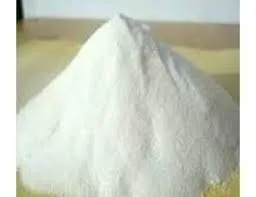
Oct . 14, 2024 16:34 Back to list
use of hydroxypropyl methylcellulose
The Use of Hydroxypropyl Methylcellulose Applications and Advantages
Hydroxypropyl methylcellulose (HPMC) is a versatile cellulose derivative widely used in various industries, including pharmaceuticals, food, cosmetics, and construction. This semi-synthetic polymer is known for its unique properties, making it a valuable ingredient for numerous applications. Understanding its functions and benefits can help various sectors optimize their formulations and improve product performance.
The Use of Hydroxypropyl Methylcellulose Applications and Advantages
In addition to its pharmaceutical uses, HPMC is extensively used in the food industry as a food additive. It functions as a thickening agent, stabilizer, and emulsifier, contributing to the texture and mouthfeel of various food products. For instance, HPMC is commonly added to ice creams and dressings to improve creaminess and prevent ice crystal formation, enhancing the overall sensory experience. Moreover, it is often utilized in gluten-free products, providing the necessary elasticity and viscosity that are typically found in gluten-containing alternatives.
use of hydroxypropyl methylcellulose

Another notable area of application for HPMC is in the cosmetics and personal care sector. It acts as a binder in formulations such as creams and lotions, enhancing the product's aesthetic appeal and stability. HPMC is also used in hair care products, where it serves as a conditioning agent, providing improved texture and manageability. Its film-forming properties make it ideal for use in mascaras and other makeup products, offering consumers long-lasting and smudge-proof applications.
The construction industry has also benefitted from the incorporation of HPMC in various building materials. It is commonly used in tile adhesives, plastering compounds, and renovation products, where its water-retention properties ensure that the adhesive remains workable for extended periods. This is crucial for achieving better adhesion and preventing early drying, which can compromise the strength and durability of the materials. HPMC’s ability to improve the workability of cement-based products has made it an essential additive in modern construction practices.
Environmental considerations are increasingly influencing product development in all industries, and HPMC offers several sustainable advantages. As a cellulose derivative, it is sourced from renewable plant materials and is biodegradable, making it an environmentally friendly choice compared to synthetic alternatives. Furthermore, its low toxicity level and safety profile enhance its appeal in sensitive applications such as food and pharmaceuticals, aligning with consumer demand for safe and eco-conscious products.
In summary, hydroxypropyl methylcellulose is a multifunctional compound with a wide range of applications across various industries. Its unique properties, such as film-forming, thickening, and stabilizing capabilities, make it a crucial ingredient in pharmaceutical, food, cosmetic, and construction products. As industries continue to evolve towards sustainability and enhanced product performance, HPMC stands out as a reliable and efficient solution that meets contemporary demands. With ongoing research and innovation, we can expect to see even broader applications and improvements in formulations that leverage the advantages of hydroxypropyl methylcellulose.
-
Versatile Hpmc Uses in Different Industries
NewsJun.19,2025
-
Redispersible Powder's Role in Enhancing Durability of Construction Products
NewsJun.19,2025
-
Hydroxyethyl Cellulose Applications Driving Green Industrial Processes
NewsJun.19,2025
-
Exploring Different Redispersible Polymer Powder
NewsJun.19,2025
-
Choosing the Right Mortar Bonding Agent
NewsJun.19,2025
-
Applications and Significance of China Hpmc in Modern Industries
NewsJun.19,2025







